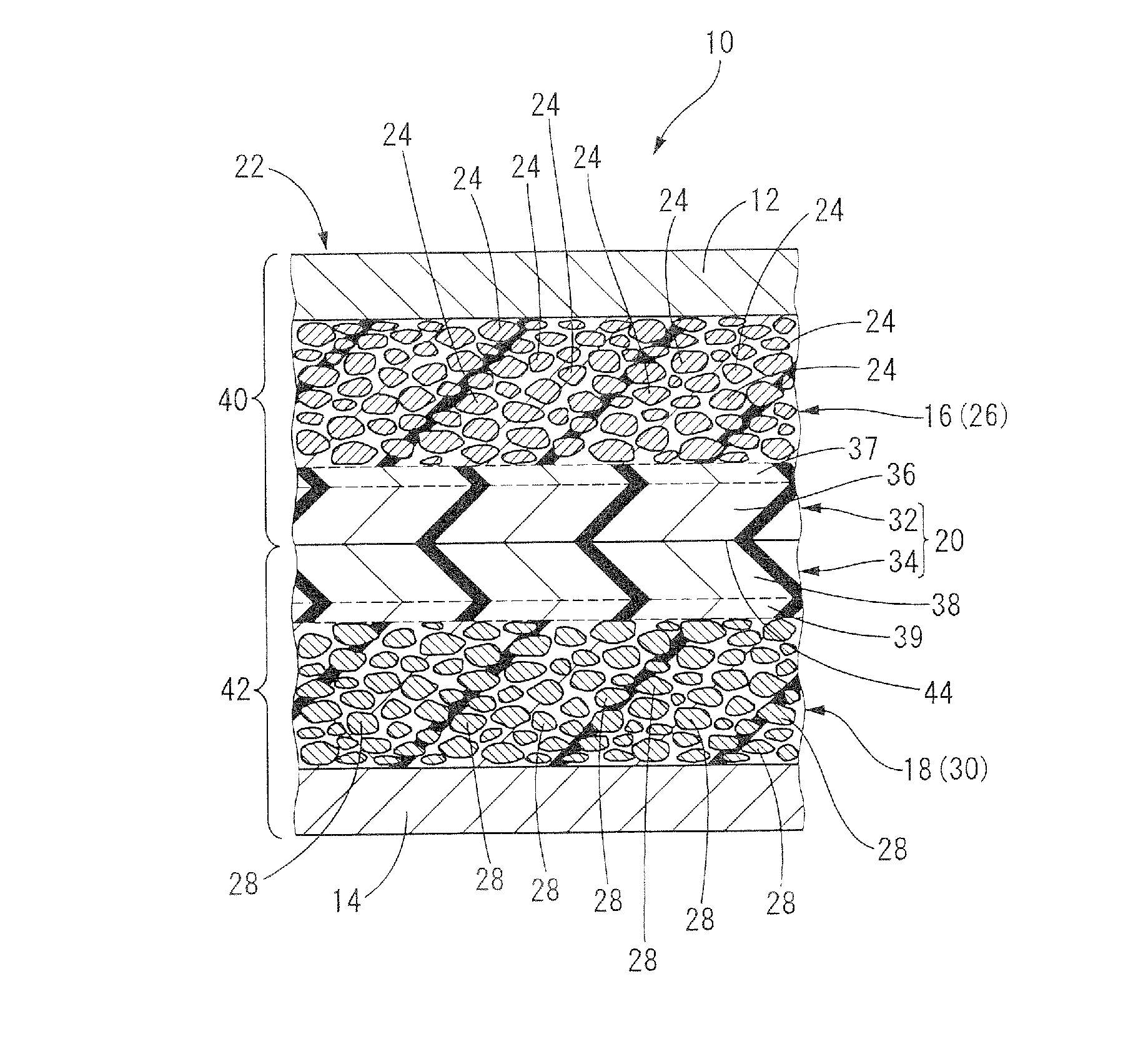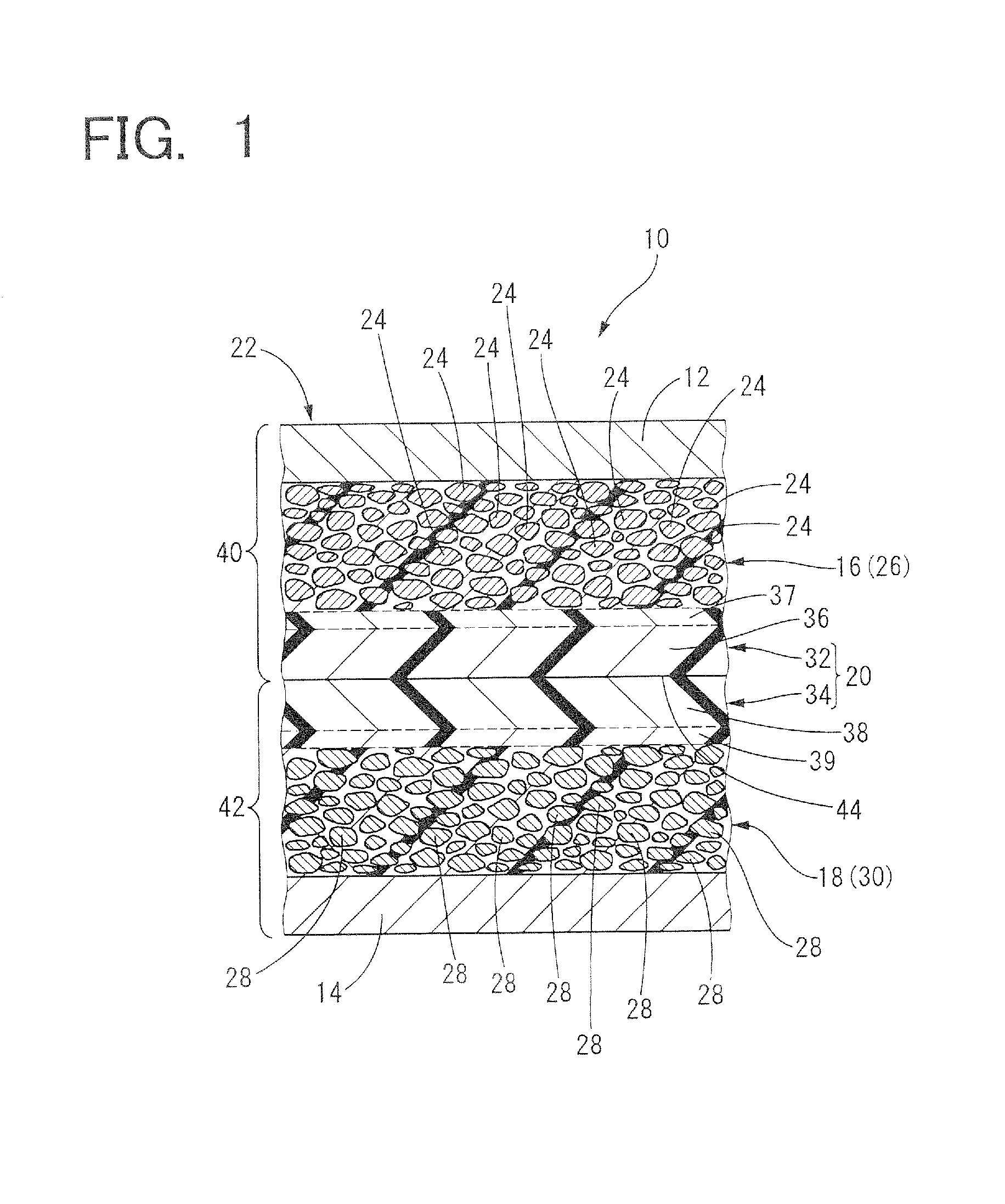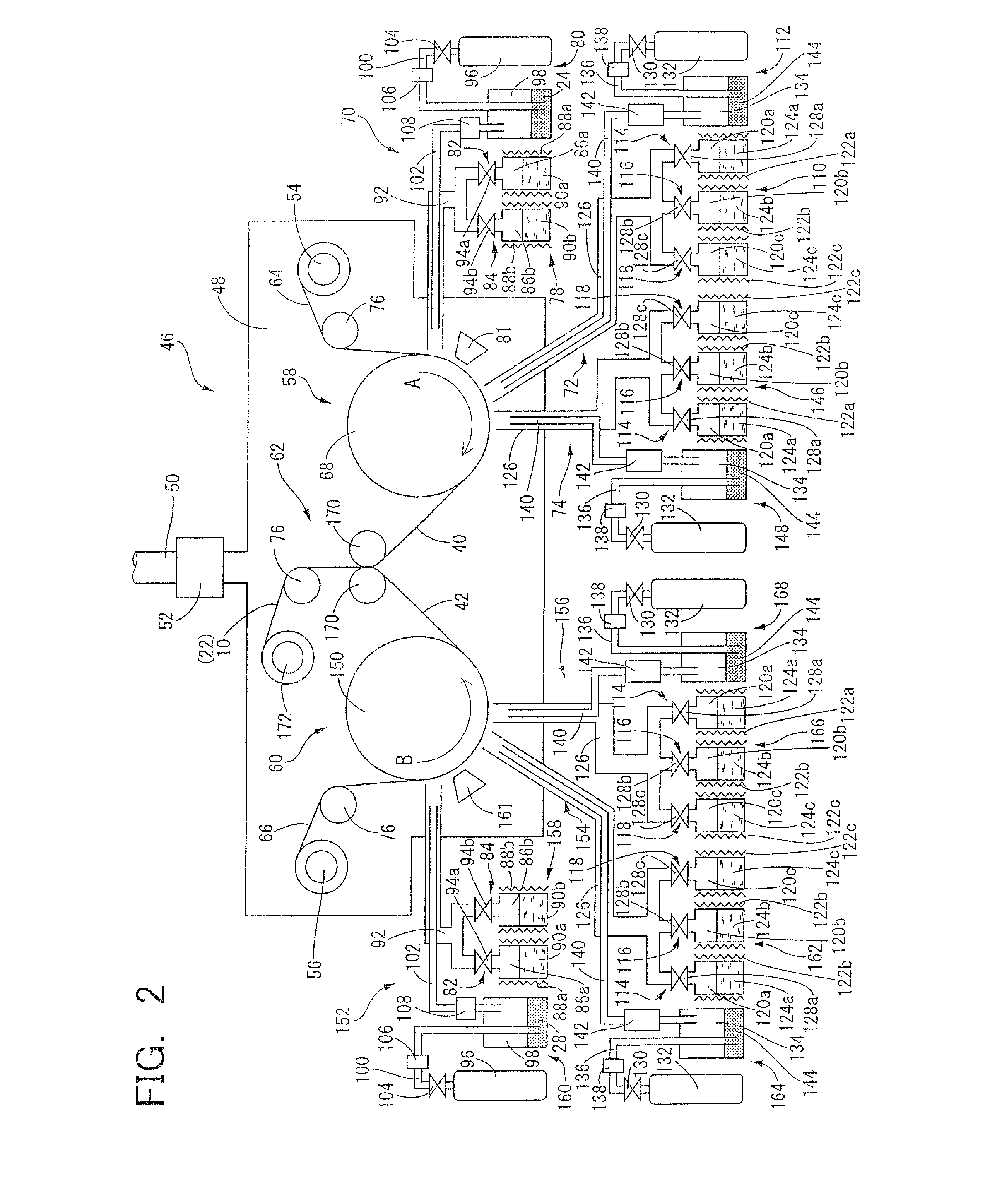Lithium-ion secondary battery, and method of and apparatus for producing the same
a secondary battery and lithium-ion technology, applied in the direction of non-aqueous electrolyte cells, cell components, sustainable manufacturing/processing, etc., can solve the problems of inability to reduce the amount of thickness reduction, and inability to meet the requirements of high-efficiency secondary batteries. , to achieve the effect of improving the performance of secondary batteries, reducing the amount of thickness reduction, and high formation ra
- Summary
- Abstract
- Description
- Claims
- Application Information
AI Technical Summary
Benefits of technology
Problems solved by technology
Method used
Image
Examples
first embodiment
[0054]Referring first to the fragmentary longitudinal cross sectional view of FIG. 1, there is shown a lithium-ion secondary battery 10 constructed according to this invention. As shown in FIG. 1, the lithium-ion secondary battery 10 of the present embodiment is constituted by one battery cell or cell element 22 in the form of a laminar structure consisting of a positive electrode collector layer 12, a positive electrode layer 16, a solid electrolyte layer 20, a negative electrode layer 18 and a negative electrode collector layer 14, which are laminated on each other in this order of description.
[0055]In the present lithium-ion secondary battery 10, the positive electrode collector layer 12 is formed of an aluminum foil, while the negative electrode collector layer 14 is formed of a copper foil. In this respect, it is noted that the positive electrode collector layer 12 and the negative electrode collector layer 14 may be formed of any materials other than aluminum and copper, such ...
second embodiment
[0153]Referring next to FIG. 3, there is shown a lithium-ion secondary battery 177 according to this invention, wherein the first solid electrolyte layer portion 32 of the solid electrolyte layer 20 consists of a positive-electrode-side vapor-deposited polymer film 174 of a single-layer structure formed on the positive electrode layer 16 by the vapor-deposition polymerization process, while the second solid electrolyte layer portion 34 of the solid electrolyte layer 20 consists of a negative-electrode-side vapor-deposited polymer film 176 of a single-layer structure formed on the negative electrode layer 18 by the vapor-deposition polymerization process.
[0154]In this second embodiment wherein each of the first and second solid electrolyte layer portions 32, 34 has a single-layer structure, it is preferred that lithium ions unevenly exist, with a higher density in a portion of the positive-electrode-side vapor-deposited polymer film 174 on the side of the positive electrode layer 16 ...
third embodiment
[0177]By the way, the kind of the lithium-ion conductivity rendering substance 144 is not particularly limited, provided this substance 144 can literally render lithium-ion conductivity to the first and second solid electrolyte layer portions 32, 34 (solid electrolyte layer 20), when the substance 144 is contained in these solid electrolyte layer portions 32, 34. Hence, it is possible to use, as the lithium-ion conductivity rendering substance 144, an ion-conductive polymer in which a lithium salt is dissolved. Where this ion-conductive polymer is used, the desired lithium-ion secondary battery 177 can be produced by a production apparatus 195 constructed as shown in FIG. 5 according to this invention, for example.
[0178]As shown in FIG. 5, the production apparatus 195 is identical in construction with the production apparatus 178 of the second embodiment shown in FIG. 4, except in the construction of the positive-electrode-side and negative-electrode-side vapor-deposited polymer fil...
PUM
| Property | Measurement | Unit |
|---|---|---|
| size | aaaaa | aaaaa |
| thickness | aaaaa | aaaaa |
| thickness | aaaaa | aaaaa |
Abstract
Description
Claims
Application Information
 Login to View More
Login to View More - R&D
- Intellectual Property
- Life Sciences
- Materials
- Tech Scout
- Unparalleled Data Quality
- Higher Quality Content
- 60% Fewer Hallucinations
Browse by: Latest US Patents, China's latest patents, Technical Efficacy Thesaurus, Application Domain, Technology Topic, Popular Technical Reports.
© 2025 PatSnap. All rights reserved.Legal|Privacy policy|Modern Slavery Act Transparency Statement|Sitemap|About US| Contact US: help@patsnap.com



